“THANK YOU MARIO!
BUT OUR PRINCESS IS IN ANOTHER CASTLE!”
- Mushroom Retainer
 |
| Warning: this article is gonna be a LONG one |
The Facts
Release Date: September 13, 1985 (Japan), Unknown for certain but possibly October 18, 1985 (North America)
Original Platform: Famicon (Japan), Nintendo Entertainment System (North America)
Director: Shigeru Miyamoto
Producer: Shigeru Miyamoto
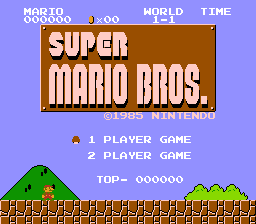 |
| Image sources for this article: mariowiki.com, unless otherwise noted |
Also Playable On: Famicom Disk System, Nintendo PlayChoice-10, SNES (remake), Game Boy Color (remake), Game Boy Advance, Virtual Console (Wii, 3DS, Wii U), NES Classic Edition, Nintendo Switch Online, 35th Anniversary Game & Watch
What's the Deal
It's a story as old as time itself (if time itself is 37 years old):
The once-peaceful Mushroom Kingdom is under attack by the Koopa, a
villanous tribe of monsters, led by the evil King Bowser! They've
transformed the citizens into background objects and blocks!
The
only one that can undo this curse is the monarch, Princess
Toadstool...unfortunately, she's been captured by Bowser, along with
her seven Mushroom Retainers!
All hope seemed lost until Mario, a man of great courage and determination (and his brother, Luigi), arrives to defeat Bowser, rescue the princess, and save the Mushroom Kingdom!
Background/Development
As we all know, Mario first appeared in 1981's arcade hit Donkey Kong, rescuing a lady named Pauline from the titular gorilla.
He then appeared as the villain in the sequel, Donkey Kong Junior, before getting his own title role in 1983's Mario Bros., which introduced the character of Luigi, as well as concepts like turtle enemies (called “Shellcreepers”), the idea of taking out opponents by hitting the platform they're on from below, collecting gold coins, and green sewer pipes as a gameplay element.
Inspired by Namco's Pac-Man spinoff, Pac-Land, Shigeru Miyamoto and Takashi Tezuka began developing a horizontally-scrolling action game as a follow-up to their previous successes, Excitebike and Devil World.
The placeholder protagonist was a 16×32 pixel square that couldn't even jump. Tezuka is the one that suggested having Mario be the playable character, due to how popular Mario Bros. was in arcades.
I'm guessing this is why stuff like turtle enemies, coins, striking platforms from below, and characters traveling through pipes made it into the game, since they were concepts brought in from Mario Bros.
Design documents show that girders and vines from the two Donkey Kong arcade games were also consisdered.
The game was developed concurrently with The Legend of Zelda, pretty much solidifying Super Mario and Zelda as being sister series (or perhaps brother series?), something that continues to this day.
Development took a little under a year, from fall 1984 to August 1985, being released in Japan on September 13, 1985.
Early concepts included Mario having some projectile weapons, described as a “rifle” and a “beam gun”, as well as a scrolling shooter level where Mario would ride in a cloud (maybe inspired by Sun Wukong from Journey to the West?), throwing fireballs at flying enemies.
The only remnants of the scrolling shooter segments left in the game are the “Coin Heaven” bonus areas in the clouds.
The intention was for Mario to remain “Super” for the entire game, with the concept for “Small Mario” coming later.
The home video game market crashed in North America in 1983, due to a variety of factors such as oversaturation of consoles (Atari's 2600 and 5200, the Bally Astrocade, ColecoVision, Emerson Arcadia 2001, Magnavox Odyssey, Intellivision, Vectrex, and Channel F-System II were all competing on the market at the time), and very few quality games to play on them.
After a deal with Atari to bring the Famicom to the West fell through, Nintendo instead released the console over here as the Nintendo Entertainment System, designed to look less like a gaming console and more like a VCR, as well as marketing it as a toy instead of a game system via R.O.B, the Robotic Operating Buddy.
But it was this game, Super Mario Bros. that broke through the game-weary audience in North America.
My History With It
Despite being the first one released, this was not my first Super Mario game (we'll get to that one soon).
I was aware of it, though, because I'd watched reruns of The Super Mario Bros. Super Show! (a show that incorporated many elements of this first game) on USA Network (as part of their hour-long “Mario All Stars” block), as well as owning a few episodes of it on VHS.
But, my first exposure to SMB1 itself was via renting Super Mario All-Stars in the early-to-mid-90s, before my SNES went into my mom's closet for a few years (due to moving, I assume).
After we discovered it again, I got hooked on Super Mario World and rewatching both the Super Show! episode and the 1993 live-action Super Mario Bros. Movie on VHS.
It was clear to anyone that I was now a Super Mario fan for life, and thus, when I was about seven years old, my aunt bought me a copy of the Player's Choice edition of Super Mario All-Stars at the local Walmart.
About a year or two later, a family friend loaned us their NES and Super Mario Bros.+Duck Hunt, allowing me to experience the game in its original form, and child me was absolutely fascinated by the 8-bit graphics. I really dug that aesthetic and art direction.
I even started drawing a picture book retelling the story of the game, trying to emulate the style.
In 1999, Super Mario Bros. Deluxe was released on Game Boy Color. My dad got me a copy of it for Christmas, even though I didn't have a Game Boy Color (not that I was ungrateful! Even then, I still really appreciated the thought, even if the game didn't work in my GB Pocket).
I ended up getting one for my birthday a few months later, and put hours into it (it's a really cool port/remake. TONS of bonus material).
In fact, Deluxe was the first version of the game I ever beat, thanks to a guide I was looking up on either GameFAQs or IGN thanks to the power of MSN's WebTV.
A friend around this time told me about the Game & Watch version of Super Mario Bros. being available as part of the “Nintendo Mini Classics” keychain line, and I became obsessed with getting it, being fascinated by the idea of playing an LCD version of this game.
I eventually got it, and, uh...I got a very interesting and ambitious G&W game that ultimately wasn't very fun to play.
In 2007, Super Mario Bros. was the first game I bought from the Wii Shop Channel (and I still say it should've been included on the console by default). It became my go-to game to kill some time if I had a few minutes to spare. Around this time, I heard about the 5-minute record speedrun of the game, and I began to practice to see if I could get close (best I could do is about seven).
2009, my best friend gave me a secondhand NES as a birthday present, with Super Mario Bros./Duck Hunt included.
Got the game on 3DS Virtual Console, and played through Super Luigi Bros. on NES Remix, and was given the 35th anniversary Game & Watch: Super Mario Bros. as a Christmas gift (I swear I give gifts, too! They're just not relevant to this history).
Playthrough
Played On: NES, via the compilation with Duck Hunt.
 |
| And on a CRT TV at that! Yeah, I'm THAT kind of retro gamer |
I wanna really appreciate everything this game has to offer, so I'm gonna try to not speed through this as fast as I can.
World 1-1 is rather genius for subtly introducing players to the game. A mushroom-shaped enemy approaches the player, and the only thing you can do is walk/run or jump. You run into it and lose a life; you jump on it and defeat it. Next, you hit a ? block and another mushroom comes out. You jump on it OR run into it, and grow in size; teaching the player that walking brown mushrooms: bad, limbless red mushrooms: good.
There's a small staircase in the latter half of the course in front of a staircase in the opposite direction, with solid ground between them. This is practice for a similar set of staircases coming up with a bottomless pit between them.
The background music is at almost the same tempo as Mario's walk animation, setting the beat for the gameplay.
First few times I played this game, I took the pipe to the underground bonus area in World 1-1, unaware for weeks that there's not only a Super Star in the level, but a Fire Flower as well.
Had to fight off speedrunner muscle memory in 1-2 by not taking the ceiling route to Warp Zone.
I can go to the Minus World. I've done it before. I just chose not to this time.
Are the platforms in 1-3 supposed to be trees? I always saw them as, uh, I dunno. Thick, long stalks with grass on top.
Typing that out made me realize that they probably are trees.
Playing this on NES as a kid was kind of a shock when I saw the first False Bowser. I remember being amused by how goofy he looked.
This might be common knowledge, but I think there's a few people that don't know: you only face Bowser once in the game. The other seven are regular enemies, disguised as Bowser. To uncover their disguise, you have to defeat them with fireballs instead of grabbing the axe.
In the underground and castle courses, the bricks and Goombas are colored blue and grey, respectively.
I don't know how much of this is intentional to convey the darkness of the area, or if it's due to hardware limitations. The Buzzy Beetles are also colored this way, but I'm about 76% certain that's to make them visible on the black background.
However, this doesn't apply to the nighttime stages, where everything keeps their normal colors, making the Buzzy Beetles difficult to see in the Second Quest.
My mother is hydrophobic, but always enjoys underwater levels in platform games. I recall her being thrown off playing the All-Stars version of 2-2, because the Bloopers were pink instead of white, like they are on the Deluxe version.
Someone at Nintendo loves that underwater music, since new arrangements of it became the title screen music of the All-Stars version of this game, Lost Levels, and SMB3, as well as the backstory music for all versions of SMB2.
World 2-3 (and by extension, 7-3) are the worst. Cheep Cheeps are flying up seemingly at random, and surviving is mostly left to luck.
That said, it's not completely random. They'll pop up behind Mario if he's running, but in front of him if he's walking. The hard part is when jumping, since Mario's speed and momentum can change depending on the player's input. Glad this sorta luck-based approach was mostly phased out in later games.
World 3 is neat because it's set at nighttime. You really get the impression that Mario and Luigi are going nonstop.
I confess, I've never been able to pull off the Infinite 1-Up trick in 3-1, outside of the NES Remix minigame. I tried it on this playthrough...and I still can't.
Hopefully you folks still respect me
I seem to remember the Hidden Block containing a 1-Up Mushroom only appearing if the player had used the Warp Zone to get to World 3, but apparently I was mistaken.
- I always thought of World 3-2 as being the Fire Mario Show, because
there's very little platforming, being mostly a flat, straight shot
with a bunch of Goombas and Troopas along the way. Spamming
Fireballs while running full speed...that's the way to go.

Always felt this block formation looked like a sad Mario
- I always thought of World 3-2 as being the Fire Mario Show, because
there's very little platforming, being mostly a flat, straight shot
with a bunch of Goombas and Troopas along the way. Spamming
Fireballs while running full speed...that's the way to go.
I'd heard of the Mushroom Kingdom before reaching World 4-3, of course, but when I saw the giant mushroom platforms here, I decided that THIS is the Mushroom Kingdom.
Not sure where I thought the rest of the game took place.
4-4, of course, is the first Castle that scrolls infinitely unless you take the correct paths.
Took me FOREVER to realize this, and ran out of time a few times. Yes, even with the chimes and buzzers telling me if I took the right path or not. I was kind of a dense child, I admit.
5-1 begins with Mario emerging from a small fortress instead of the World 4 Castle. I think this is an oversight that nevertheless appears in every remake.
World 5 as a whole seems to have a snowy, wintery theme, judging by the white background objects. All-Stars makes this more apparent by putting snow on the ground.
Starting here, remixed versions of previous levels start to appear, such as 5-3 being 1-3 with random Bullet Bills flying at our hero, and with smaller platforms to jump on.
The extra-long Fire Bar in 5-4 startled me as a child, and I was amazed that the game expected me to get past it somehow.
6-1 is fun because while Lakitu returns, there's rows of Brick Blocks Mario can hide from the Spinies underneath. Also, this world is night-themed as well.
6-3 uses a greyscale palette, and it's unclear if it's supposed to be a snow-themed level, or just a single monochrome level for no reason. All-Stars goes with the former, but I think the latter is cooler.
I defeated the False Bowser in 6-4 with Fireballs (revealing him to be a Blooper in disguise), but as I crossed the bridge to get the axe, a Lava Bubble suddenly shot out and struck Fire Mario, shrinking him. Couldn't help but laugh.
World 7, for the most part, is stuff we've already seen.
A Hammer Bro in Paper Mario: The Thousand-Year Door, claims that 7-1 is his grandfather's 'hood, implying his gramps is one of the four Hammer Bros in this level.
Couldn't remember the correct path for 7-4, but I somehow managed to stumble my way through it without losing a life.
World 8 ramps up the difficulty, with longer, harder levels, no checkpoints, and a shorter timer.
Usually, Lakitu is star of the levels he appears in, being the main threat. Not in 8-2, where he's there at the start, but quickly goes away.
8-3 is interesting. The walls of Bowser's Castle, the final level of the game, are visible in the background (there's even a 10-coin Block hidden in one of the walls, a neat bit the All-Stars version couldn't replicate due to redesigning the castle wall).
Hammer Bros all over the place. This is where my speedrun attempts slow down, since I'm not Fire Mario due to grabbing power-ups eating up precious seconds, and thus have to be very careful to not be taken out by the hammers being thrown.
Putting a Koopa Troopa whose shell can be kicked at the Hammer Bros is cool, since there's no blocks for Mario to hit them off of. What's not cool is another set of Hammer Bros on the ground, and no Troopa to kick at 'em.
In 8-4, if the Pirhana Plants disappear as you approach the pipe they're in, that's the pipe you need to take.
Defeated the real Bowser with fireballs, and rescued Princess Toadstool, with a score of 644450.
The strategy guide I owned included an amusing little text piece where Mario faints at the idea of having to go on ANOTHER quest.
Didn't play through all of the Second Quest, instead taking my speedrun route of 1-1, 1-2 Warp Zone, 4-1, 4-2 Warp Zone, 8-1, 8-2, 8-3, 8-4.
Power-Ups
Magic Mushroom (later renamed Super Mushroom): Makes Mario/Luigi grow larger, and gives them an extra hit point
Fire Flower: Same as the Super Mushroom, but enables the Bros. to throw fireballs at enemies.
Starman (later renamed Super Star): Turns Mario and Luigi invincible to enemy attacks for a few seconds.
1-Up Mushroom: Gives the player an extra life
Milestones
It's the very first Super Mario game, so there's a lot.
Debut of Bowser, Princess Toadstool/Peach, and the Toads.
First appearance of Goombas, Koopa Troopas, Koopa Paratroopas, Pirhana Plants, Buzzy Beetles, Bullet Bills, Lakitu, Hammer Bros, Spinies, Lava Bubbles, Bloopers, Fire Bars, and Cheep Cheeps.
First time Mario can defeat enemies by jumping on them, kicking a shell at them, or by throwing a fireball
Debut of ? Blocks, vines, and Brick Blocks
First appearance of Goal Posts and corresponding castles
The Super Mario Bros. Ground Theme, underworld theme, Princess Peach's theme, underwater music, and invinciblity theme all debut here, as do the “lose a life”, “Course Clear” and Game Over jingles.
First Warp Zones
Levels are themed around being on the groud, underground, underwater, on very high up mushroom platforms, and castles for the first time.
First alternating two-player mode where player two is Luigi
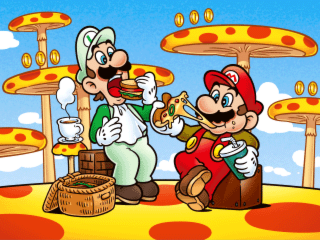 |
| Screensaver from the 2020 "Game & Watch: Super Mario Bros." |
Trivia
Due to being short on time, Miyamoto drew the packaging artwork himself, including a grey version of Bowser inspired by the Bull Demon King from the 1960 anime adaptation of Journey to the West.
Miyamoto worked with artist Yoichi Kotabe to figure out Bowser's more familiar design, making his turtle features more prominent (since he's the King of the Koopas) but keeping the ox head.
Miyamoto also assisted with Kotabe's redesign of Princess Toadstool, saying he wanted her eyes to be more cat-like, and for her to seem stubborn, but charming.
A promotional flyer for the arcade port, as well as the register number for the game at the US Copyrights Office indicates that the original American title for the game was to be “Mario's Adventure”
The English language instruction manual mentions that Princess Toadstool is the daughter of the Mushroom King, a character that's never depicted in the games, but did appear in Valiant Comics' official Super Mario Bros. series.
Despite not being in the Japanese manual, the King appears on the Korean box of the game., as well as some strategy guides produced in Asia, such as Super Mario Bros. Perfect Strategy Guide (later released in the US as How to Win at Super Mario Bros.)
Officially, Super Mario Bros. sold 58,000,000 copies, making it (for a time) the greatest-selling video game of all time, overtaking Super Mario Bros. 3, which had previously held the title.
Currently, Super Mario Bros. is the sixth-best-selling game ever, and the highest Super Mario game on the list.
Despite this game's importance, it's not clear when exactly it was released in North America. Nintendo of America's official date is October 18, 1985, the date that the NES launched in North America, and a preview in the Milwaukee Journal seems to confirm this, as does a November 1985 Macy's ad...however, other sources, like various video game history books, other store ads, and Nintendo of America's VP of Brand Management at the time point to the actual release date as being somewhere in 1986...while the US Copyright Office indicates that it was October '85. TheMushroomKingdom.net has a great writeup on it here.
Conclusion
Asking someone like me to review Super Mario Bros. is like asking a middle-aged sci-fi fan to review the 1977 Star Wars. Not only did it totally redefine its respective genre (platformer, science fantasy), but its medium as well (video game, film), with its influence still felt to this day.
Fact of the matter is...there was nothing like Super Mario at the time.
Even its contemporary proto-sidescrolling platformers like Pitfall and Pac-Land were immediately outclassed by SMB when it hit.
The game is massive for its time, with 32 (mostly) distinct, unique levels. Each level is different from the one before it, with a different set of challenges, and a few different themes as well (overworld, underground, underwater, treetops/mushrooms, castle)
The graphics aren't the best that the NES could do, but everything looks fine. There's a whimsical, cartoony fantasy aesthetic, seamlessly mixed with frequent industrial elements, like steel girders and sewer pipes, which gives the franchise its unique visual identity.
Koji Kondo's music for this title is pretty much the soundtrack for video games as a medium. Every single track is iconic.
Final Fantasy's Nobuo Uematsu has stated that the overworld theme should be the Japanese national anthem.
Gameplay-wise, it's perfect. The mechanics are expertly balanced and intuitive, and, I have to admit, due to his weight and speed, controlling Mario rarely ever feels this natural again, even in games I like better overall. The controller feels like an extension of my body.
The objective is straightforward: move this little mustached guy across an athletic obstacle course to the flagpole, but be careful of the diverse array of enemies and hazards in the way. Power-ups that give you more offensive and defensive options are hidden inside the blocks scattered all over the place, plus there's various bonus rooms and shortcuts hiding in certain levels as well.
Look, it's a classic, and for good reason. And while several of its sequels surpass it...it still absolutely still holds up today. A wonderful game to just lose yourself in for a couple of hours.
“Being told 'thank you' by Princess Peach,
Mario's heart must swell.
Mario's adventure
Ended here, even if Mario's dream continues without end.”
- lyrics to GO! GO! MARIO!/Mario's Big Adventure
Next Time: Things stay familiar, but get a whole lot harder. Too hard for American audiences, even! We're heading back to the Mushroom Kingdom for 1986's Super Mario Bros.: The Lost Levels!

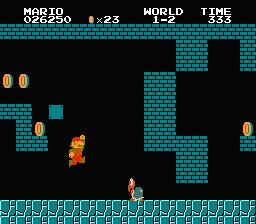

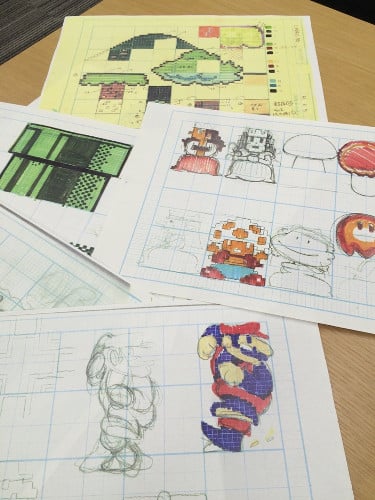


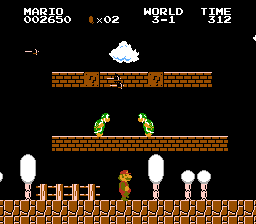
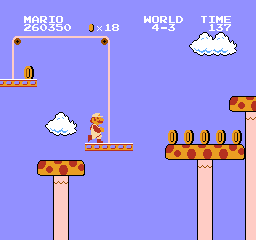
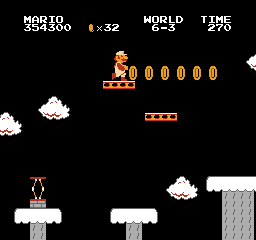
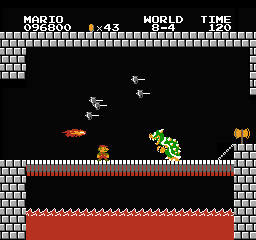
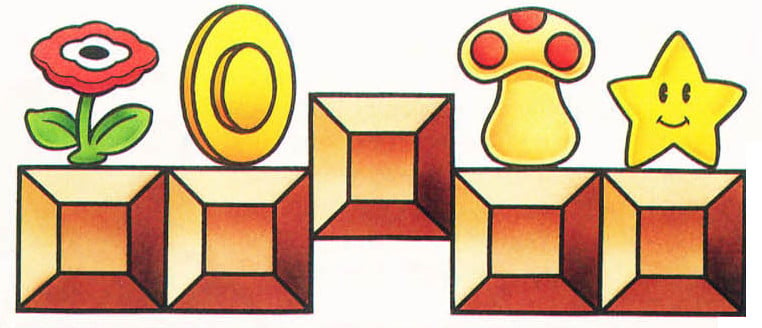
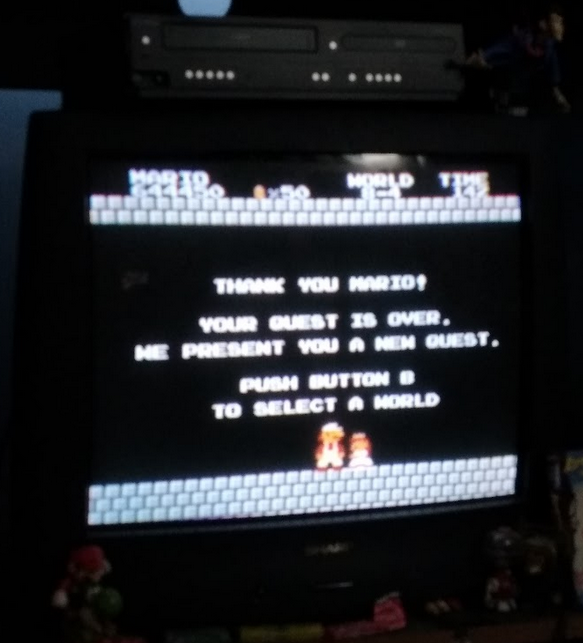
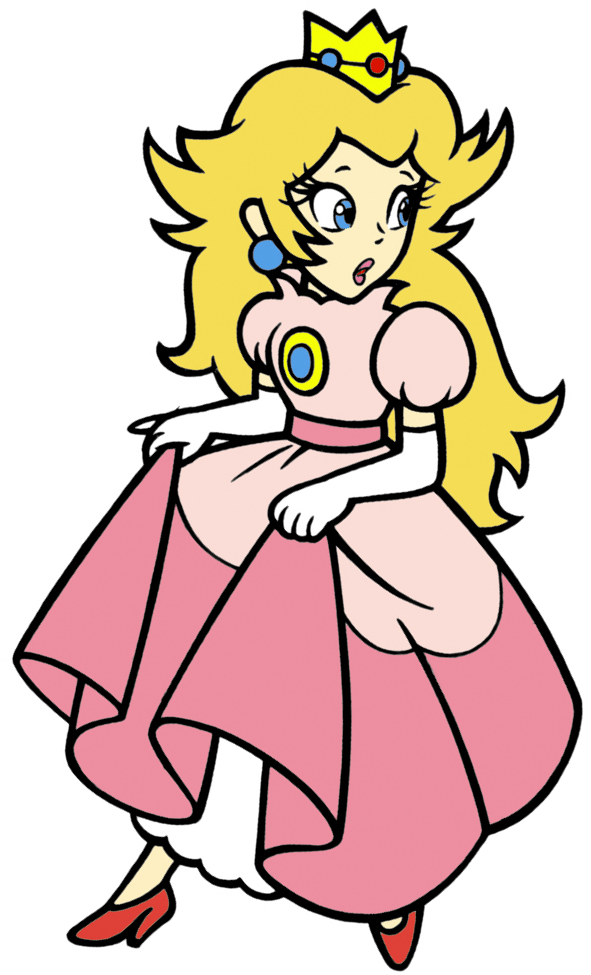
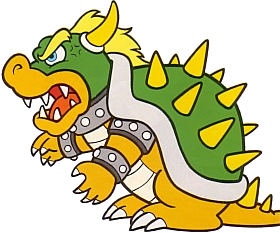
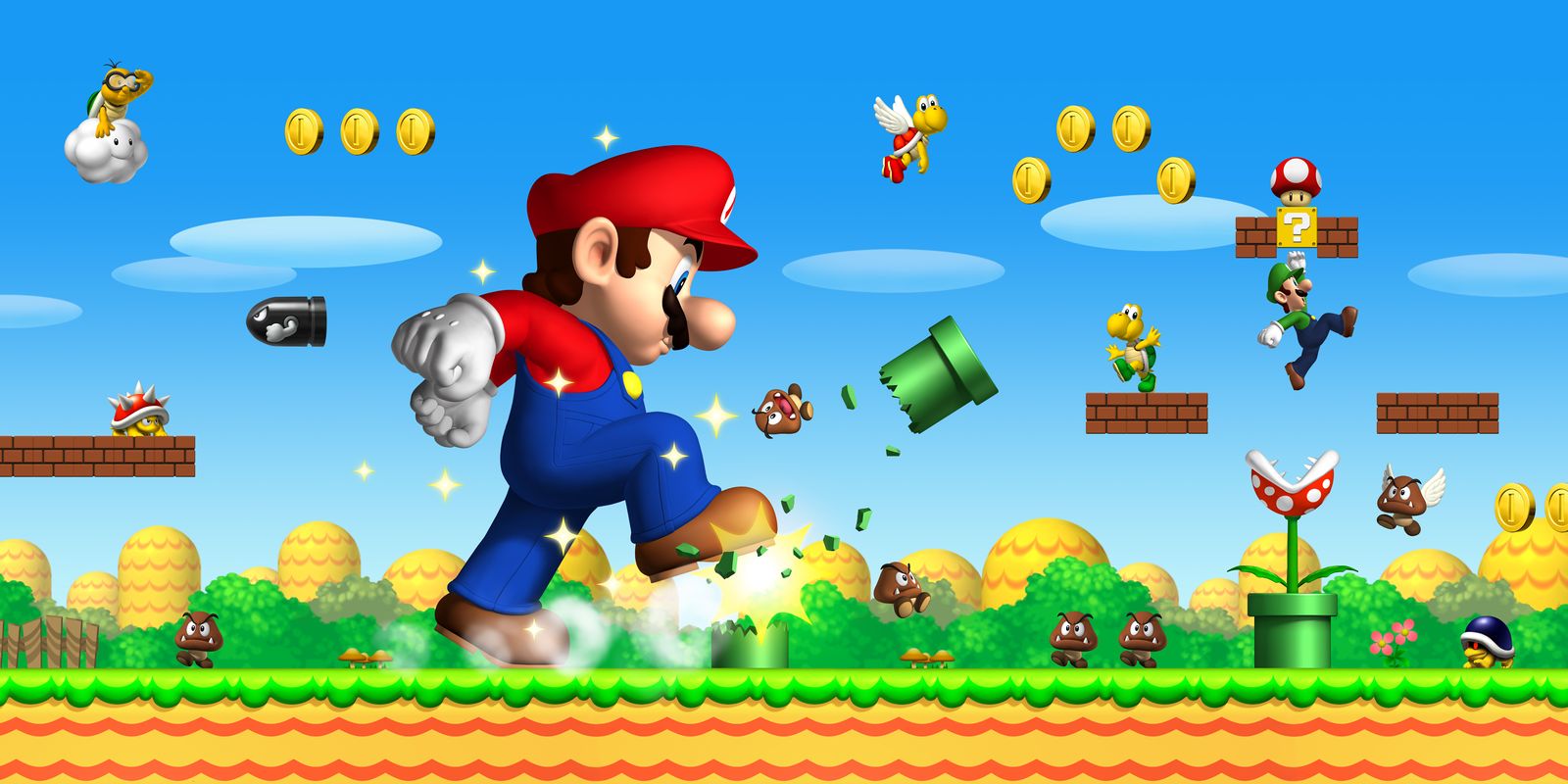

No comments:
Post a Comment